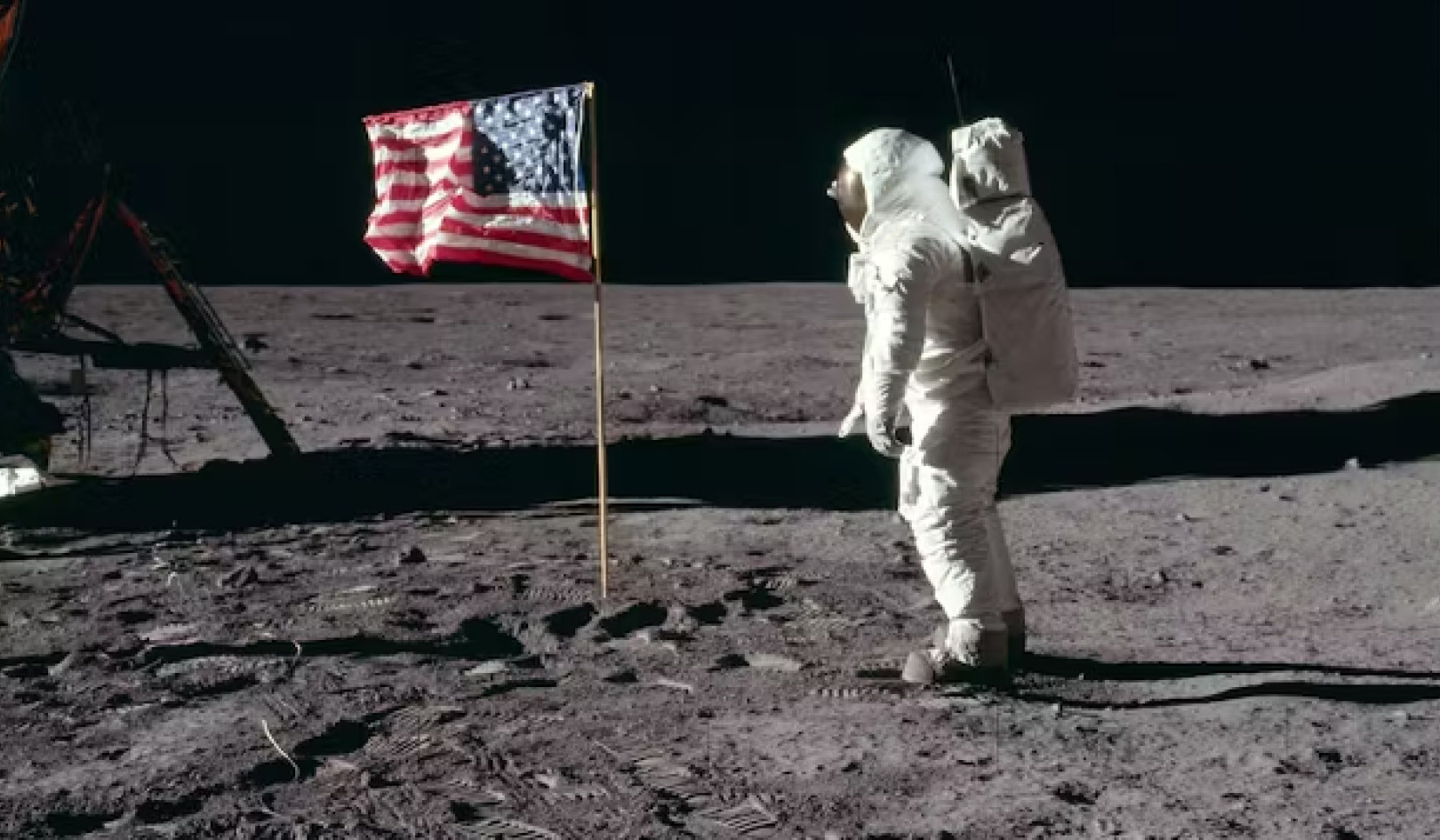
Psychiatric heretic R. D. Laing (author of Politics of Experience) wrote, “The condition of alienation, of being asleep, of being unconscious, of being out of one’s mind, is the condition of the normal man. Society highly values its normal man. It educates children to lose themselves and to become absurd, and thus to be normal.” In Laing’s mind normality is insanity, whereas madness may be a path to “hypersanity.”
As the world founders on the verge of the abyss — as ecological disasters and wars become more prevalent — it seems apparent to me that we are approaching a momentous time, a kairos. The historian David Brion Davis has described a kairos as a period of reform in which an “eschatological leap” becomes possible, one that overcomes “demonic powers and then transcends the limits of previous political, racial and economic history.”
Waking Up From An Outmoded, Dysfunctional World View
McLoughlin substitutes the term “cultural revitalization” for kairos — the two are synonymous. Cultural revitalizations constitute “the awakening of a people caught in an outmoded, dysfunctional world view to the necessity of converting their mindset, their behavior, and their institutions to more relevant or more functionally useful ways of understanding and coping with the changes in the world they live in.”
The outmoded order in the current situation consists of the corporate capitalist mentality and institutions. What the young anticorporate radicals call the one percent are the beneficiaries of the present order, but the order is sustained by the allegiance and habits of the masses of Americans who are completely oblivious — unaware if not indifferent —? to the harm inflicted on other beings, including humans, and are deluded by cultural myths. The environmentalist Derrick Jensen writes:
Deluded by myths of progress and suffering from the psychosis of technomania complicated by addiction to depleting oil reserves, industrial society leaves a crescendo of atrocities in its wake. A very partial list would include the Bhopal chemical disaster, numerous oil spills, the illegal depleted uranium-spewing occupations of Iraq, Afghanistan, mountaintop removal, the nuclear meltdown of Fukushima, the permanent removal of 95 percent of the large fish from the oceans (not to mention full-on systemic collapse of those oceans), indigenous communities replacement by oil wells, the mining of coltan for cell phones and Playstations along the Democratic Republic of the Congo/Rwanda border — resulting in tribal warfare and the near-extinction of the Eastern Lowland gorilla. . . . As though 200 species going extinct each day were not enough, climate change, a direct result of burning fossil fuels, has proved not only to be as unpredictable as it is real, but as destructive as it is unpredictable.
For Whom Does The Bell Toll: The Planetary Emergency
Even Occupy Wall Street, the most significant populist movement since the 1960s, seems unaware of the gravity of the danger humanity faces. Millions of people around the world have correctly identified the corporate vultures who are destroying society, ravaging the Earth. However there is not yet a sense of life or death urgency, not yet an awareness that the decisive battle is approaching: if the corporations win this battle, humanity will be destroyed, all life on Earth may be destroyed.
In 2007 James Hansen, the NASA climate scientist, wrote that global warming created by human use of fossil fuels has “brought us to the precipice of a great tipping point. ” Hansen called this a “planetary emergency” and said “we must move onto a new energy direction within a decade to avoid setting in motion unstoppable climate change with irreversible effects. ”
Hansen is not alone: as David Orr, professor of environmental studies at Oberlin College pointed out, not only does humanity face the risk of being completely destroyed, by some accounts by the end of the century, but “we have been alerted, warned and warned again by ecologists, geologists, systems analysts, physicists, Pulitzer Prize winners, Nobel laureates. . . but so far without much effect. ”
Two years ago British Petroleum accidentally dumped 180 million gallons of oil in the Gulf of Mexico, creating a nightmare for marine life and the people in the region. Many Americans watched TV with horror, transfixed by the images of birds too drenched in oil to fly. However, the deep-water oil drilling continues in America, and BP has resumed drilling in the Gulf; even without an accident, carbon emissions that cause global warming increase.
The World Caught in the Grip of Opposing Forces
 Many of the mad — the people labeled “schizophrenic, ” “schizoaffective, ” and “bipolar” — seem to know all about this. They have seen it in their visions. They have felt it. Since the culture values apathy, ignorance, and “self-imposed denial in the face of all this sadistic exploitation and violence, ” these traits are considered normal signs of mental health. To lie awake at night worrying about birds drenched in oil is obviously abnormal — “mentally ill. ”
Many of the mad — the people labeled “schizophrenic, ” “schizoaffective, ” and “bipolar” — seem to know all about this. They have seen it in their visions. They have felt it. Since the culture values apathy, ignorance, and “self-imposed denial in the face of all this sadistic exploitation and violence, ” these traits are considered normal signs of mental health. To lie awake at night worrying about birds drenched in oil is obviously abnormal — “mentally ill. ”
John Weir Perry said of the visions of the mad, “I’ve been told, by people looking back on the experience, that one thing that stands out most of all, beyond the feeling of isolation, is the perception that everything that comes up is divided into opposites: Good and Bad, God and the Devil, Us and Them, or whatever. . . . It takes the form of experiencing the world as caught in the grip of opposing forces, whether they be political, spiritual, cultural, ideological, or even racial. In recent years I’ve noticed it’s ‘those who might destroy the planet’ versus ‘those who are ecologically minded. ’”
"Mad" Visions That Mirror the Deeper Reality
The mad have seen correctly; their visions mirror the deeper reality. Perry noticed this about his patients in 1982, before most people were talking about ecology. Perry points out that their visions unfold sequentially and that after the phase of conflict. . . they still dream of redemption, of a return to Eden. As Perry wrote in the late 1990s, “This vision of oneness is expressed in the messianic ideation, along with the recognition that the world is going to be marked by a style of living emphasizing equality and tolerance, harmony and love. ”
In the depths of their unconscious the mad have experienced the demons of war and greed and held fast to their vision of paradise. It is for this reason that I believe that from their ranks — once they get off toxic psychiatric drugs and realize that they are clairvoyant, not sick — will come many of the prophets who will help to make the messianic vision a force within history — to create the conditions for a kairos.
©2012 by Seth Farber, PhD.
Reprinted with permission of Inner Traditions, Inc.
All Rights Reserved. www.innertraditions.com
This article was adapted from the Introduction of the book:
The Spiritual Gift of Madness: The Failure of Psychiatry and the Rise of the Mad Pride Movement
by Seth Farber.
 Many of the great prophets of the past experienced madness -- a breakdown followed by a breakthrough, spiritual death followed by rebirth. With the advent of modern psychiatry, the budding prophets of today are captured and transformed into chronic mental patients before they can flower into the visionaries and mystics they were intended to become. As we approach the tipping point between extinction and global spiritual awakening, there is a deep need for these prophets to embrace their spiritual gifts. To make this happen, we must learn to respect the sanctity of madness. We need to cultivate Mad Pride.
Many of the great prophets of the past experienced madness -- a breakdown followed by a breakthrough, spiritual death followed by rebirth. With the advent of modern psychiatry, the budding prophets of today are captured and transformed into chronic mental patients before they can flower into the visionaries and mystics they were intended to become. As we approach the tipping point between extinction and global spiritual awakening, there is a deep need for these prophets to embrace their spiritual gifts. To make this happen, we must learn to respect the sanctity of madness. We need to cultivate Mad Pride.
Click here for more info and/or to order this book on Amazon.
About the Author
 Seth Farber, Ph.D. is an author, spiritual visionary, renegade psychologist and a founder of the Network against Coercive Psychiatry. Dr Farber was one of the first in his field to realize that the mental health professions have become part of a psychiatric-pharmaceutical industrial complex -- PPIC -- whose primary goal is to make profits. He sees this as a social trend: "the cannabalization of the population by the corporations, assisted by the government." In the late 1980s Dr Farber became a supporter of the psychiatric survivors' movement, now called the Mad Pride movement. His website is www.sethhfarber.com
Seth Farber, Ph.D. is an author, spiritual visionary, renegade psychologist and a founder of the Network against Coercive Psychiatry. Dr Farber was one of the first in his field to realize that the mental health professions have become part of a psychiatric-pharmaceutical industrial complex -- PPIC -- whose primary goal is to make profits. He sees this as a social trend: "the cannabalization of the population by the corporations, assisted by the government." In the late 1980s Dr Farber became a supporter of the psychiatric survivors' movement, now called the Mad Pride movement. His website is www.sethhfarber.com























